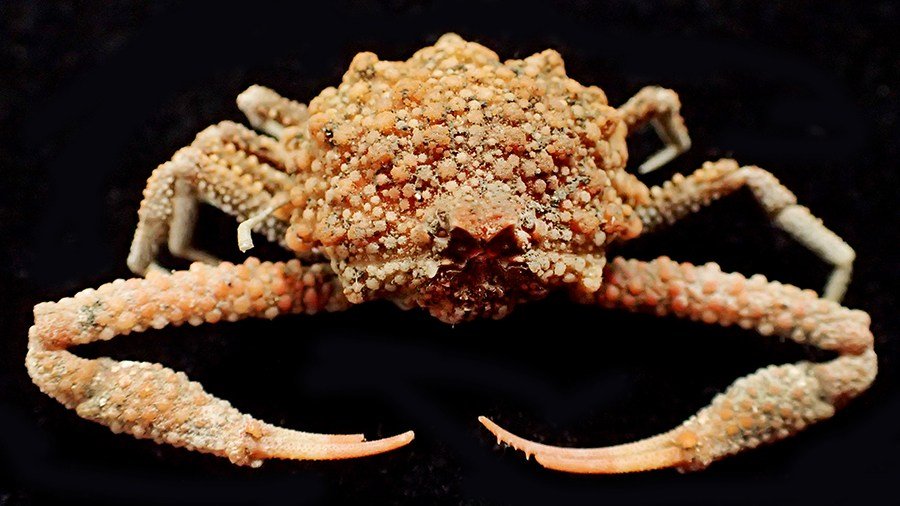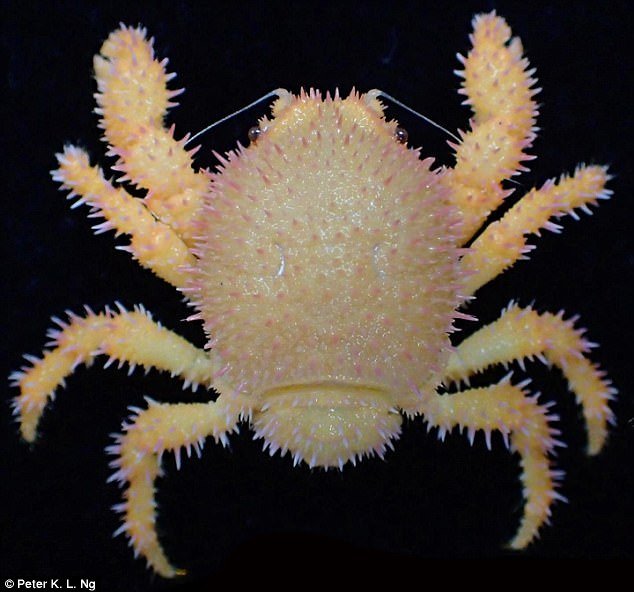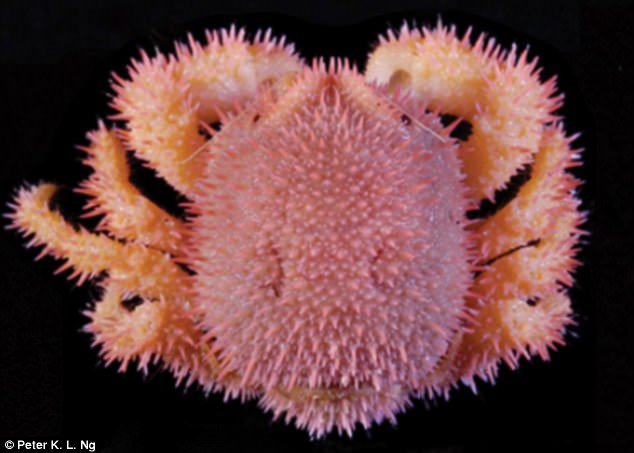Welcome to another post of my strange animals series where you get to meet some of the weirdest, coolest, and craziest animals on a daily basis!
Greetings my friends! Today I want to show you a weird crab species that was announced just a few days ago.
As you can see down below, the carapace and chelipeds of the creature are covered by pointy, fungi-like outgrowths and granules. The species was discover in red coral reefs, near the Peng-Chia-Yu Island.
 Pariphiculus stellatus covered by wart-like, mushroom-shaped outgrowths
Pariphiculus stellatus covered by wart-like, mushroom-shaped outgrowths
The species is described in a paper appearing in the Journal ZooKeys. The discovery was made by the research team of Dr. Peter Ng, National University of Singapore, and Dr. Ming-Shiou Jeng, Biodiversity Research Center, Academia Sinica,Taiwan
The researchers found the pointy protrusions reminiscent of stars, so they named it Pariphiculus stellatus, with the latin specific epithet "stellatus" translating to "starry".
The color of P. stellatus is predominantly orange with white patches, although there is some variation between individuals.
Their shade could be either dull, pale or intense. The white spots might cover some of the protrusions or extend over most of the body. The underside of the body is dirty white to light brown. [1]
The same paper also reports the first sighting of Acanthodromia margarita in Taiwan, another weird looking crab that had only been sighted before in the eastern Indian Ocean, Japan and the Philippines.
The specimen was a female and is one of the largest ever caught.


"With their bright orange to pink bodies, these hedgehog-like crabs are truly striking in life!" said Dr Peter Ng, co-author of the study.
Both species were caught with the help of tangle nets, in a seamount near the Peng-Chia-Yu Island, a small outcrop 60 km northeast of Keelung in Taiwan, a special area with controlled commercial fishing for precious red corals.
Here's the abstract of the paper:
Two brachyuran species of the families Dynonemidae and Iphiculidae are reported from red coral beds in northern Taiwan. The dynonemid Acanthodromia margarita (Alcock, 1899) has hitherto been reported from the Andaman Sea, Japan, and Philippines and the species is here recorded for the first time from Taiwan. A new species of iphiculid, Pariphiculus stellatus sp. n., is also described. The new Pariphiculus, which also occurs in the Philippines, is superficially similar to P. agariciferus Ihle, 1918, a species known from Indonesia, Japan, Philippines, South China Sea, Taiwan, and Vanuatu, but can be distinguished by distinct carapace, pleonal and male first gonopod features. [2]
The paper is open to the public, just open the second link in the references if you want to learn more about the discovery.
That's it for today! See you tomorrow, in my next strange animals post!
References
Photo Credit
All photos by Peter L. L. Ng. (CC-BY 4.0)

My dear readers, thank you for reading today's article. Hopefully, you found it interesting enough to follow me, @trumpman. You may also want to check my strange animal series where you get to discover some of the world's weirdest animals! Here are the last 5 weirdos of the series:
- Yellow Boxed Fish: Is This the Cutest Fish or What?
- BigFin Squid: Creepy, Alien-Like Terror From the Deep
- 9 Incredibly Weird Animal Penises !!!
- Beauty Stings #2 - The Wattle Cup Caterpillar
- Leptodirus hochenwartii: The First Cave-Dwelling Animal Ever Discovered
Steemstem & Steemiteducation
Interested in science? Please, don't forget to check the @steemstem, a community-driven project meant to promote well-written, high-quality, STEM-related content (STEM as for Science, Technology, Engineering and Mathematics). Just click here to join us!
Also a big thank you goes to the @steemiteducation project for liking and sharing my content. Check em out, they have some cool stuff :)
Greek Community
A final big thanks goes to all my fellow greeks who support me with their love! You guys rock! A special mention also goes to @rouketas and @skapaneas for bringing us all together and @ruth-girl for making me the avatar below!

